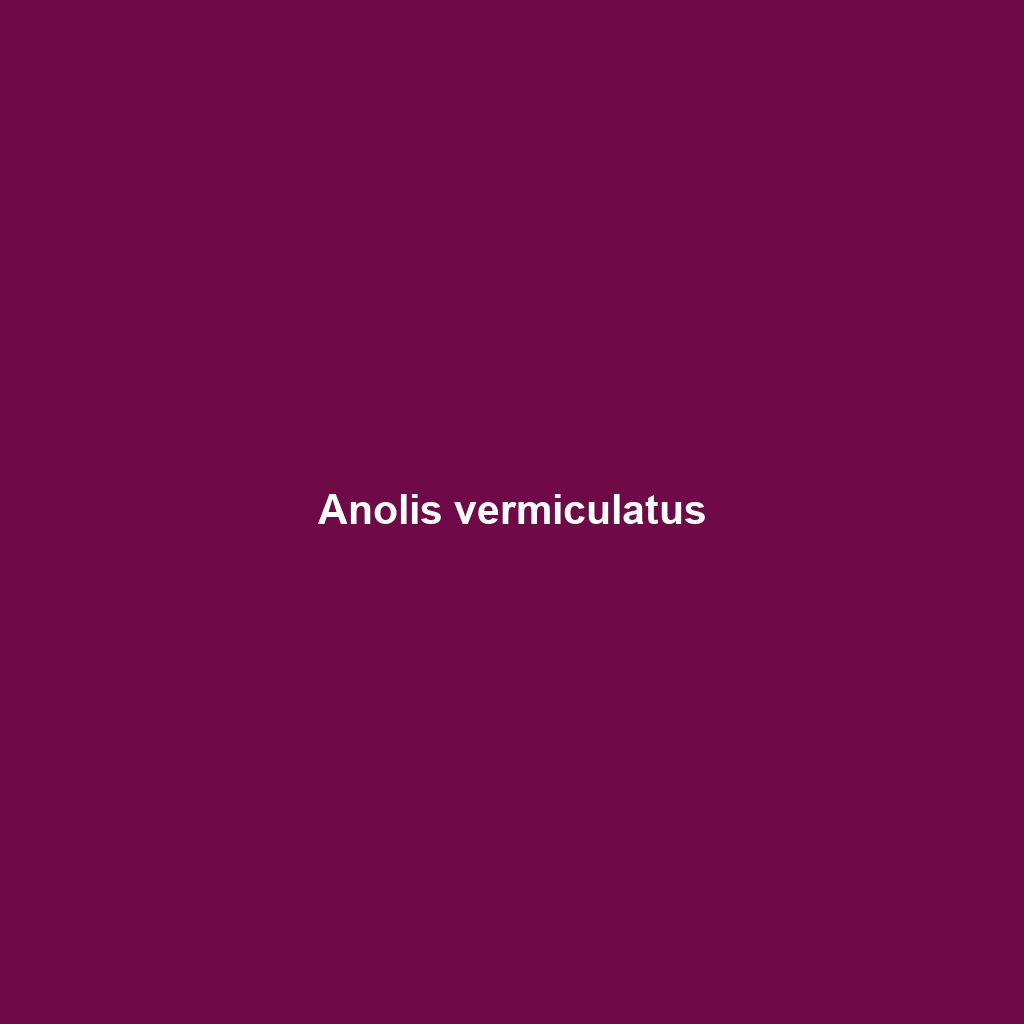Anolis vescus – Species Overview
Common Name: Anolis vescus
Scientific Name: Anolis vescus
Habitat
Anolis vescus, commonly known as the East Cuban Anole, is primarily found in the eastern regions of Cuba and the coastal areas of the Bahamas. This species thrives in subtropical environments, often residing in forests, shrubs, and gardens where warm temperatures and humidity levels are prevalent.
Physical Characteristics
Anolis vescus typically measures between 5 to 7 inches in length. It exhibits a vibrant color palette that includes greens, browns, and occasionally bright yellows, which help it blend into its natural surroundings. A notable feature of this species is its elongated body shape and a fan-like dewlap, which is often used in communication and courtship displays.
Behavior
This species is diurnal, meaning that it is active during the day. Anolis vescus is known for its territorial behavior, particularly males who often engage in displays of dominance through push-ups and expanded dewlaps. These behaviors not only establish territory but also attract potential mates.
Diet
Anolis vescus is primarily insectivorous, feeding on a diet that includes crickets, grasshoppers, and various small invertebrates. Their keen eyesight allows them to spot prey from considerable distances, making them effective hunters. Additionally, they have been observed nibbling on plant matter occasionally, broadening their dietary habits.
Reproduction
The breeding season for Anolis vescus occurs in the warmer months, with males performing elaborate courtship displays to attract females. After mating, females will lay clutches of 1 to 2 eggs in moist soil or leaf litter, where the eggs will incubate for several weeks before hatching into small, fully formed anoles.
Conservation Status
Currently, Anolis vescus is classified as Least Concern by the IUCN. However, habitat loss due to urbanization and agriculture poses potential threats to local populations. Continued monitoring is essential to ensure its long-term sustainability.
Interesting Facts
Did you know that Anolis vescus has a unique ability to change its coloration slightly to reflect its mood and environmental conditions? This remarkable adaptation not only provides camouflage but also plays a role in social interactions among individuals.
Role in Ecosystem
Anolis vescus plays a vital role in its ecosystem as both a predator and prey. By controlling insect populations, they contribute to the balance of their environments. Additionally, they serve as a food source for various birds and larger reptiles, establishing them as an integral part of the food web.
